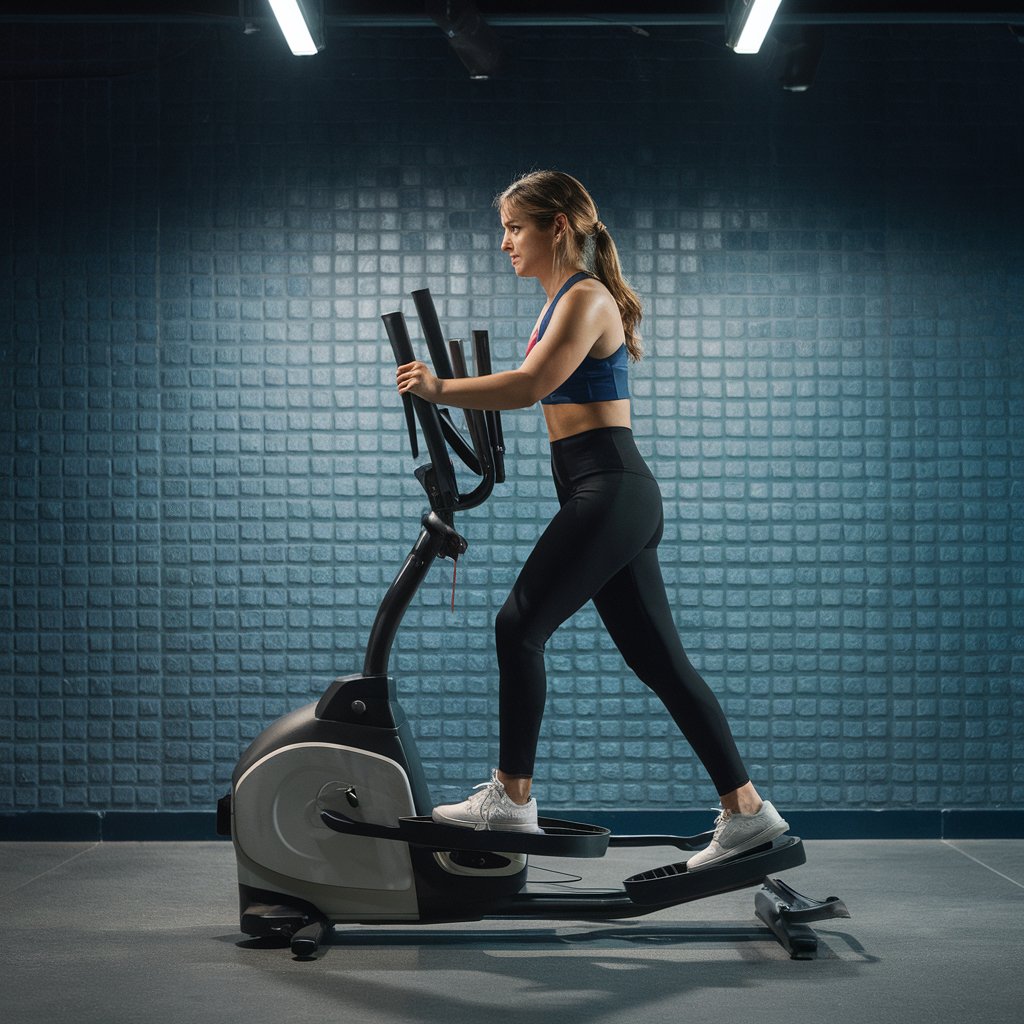Elliptical machines, also known as cross trainers, have gained popularity in gyms and home fitness setups due to their unique design and versatile workout capabilities. However, with a range of cardio equipment available, it’s essential to understand how ellipticals stack up against other options like treadmills, stationary bikes, and rowing machines.
Here’s a detailed comparison to help you determine which cardio equipment might best suit your fitness goals.
1. Impact on Joints and Injury Risk
Elliptical Machines
You should buy elliptical machines as they are celebrated for their low-impact nature. The elliptical motion mimics walking or running but without the harsh impact on joints, making them ideal for individuals with joint issues, arthritis, or those recovering from injuries. The smooth, gliding motion reduces stress on the knees, hips, and ankles, allowing users to engage in a rigorous workout with minimal risk of injury.
Treadmills
Treadmills, while excellent for cardiovascular conditioning, involve a higher impact on joints, particularly when running. The repetitive pounding on hard surfaces can lead to joint pain or exacerbate existing injuries. Some treadmills come with cushioned decks designed to reduce impact, but they still may not be as gentle as an elliptical machine.
Stationary Bikes
Stationary bikes offer a low-impact alternative to treadmills. The seated position reduces strain on the joints, particularly the knees and hips, making them a suitable option for those with joint concerns. However, the bike’s lower-body focus means it doesn’t engage the upper body or provide a full-body workout like an elliptical machine.
Rowing Machines
Rowing machines provide a full-body workout with a low-impact design. The rowing motion engages both the upper and lower body while maintaining a smooth, fluid movement that is gentle on the joints. However, improper technique or overuse can lead to lower back issues, so maintaining proper form is crucial.
2. Full-Body Engagement
Elliptical Machines
One of the defining features of elliptical machines is their ability to provide a full-body workout. The dual-action handlebars engage the upper body, including the arms, shoulders, and chest, while the lower body exercises the legs and glutes. This simultaneous engagement helps to maximize calorie burn and improve overall muscle tone.
Treadmills
Treadmills primarily focus on the lower body, with the option for incline settings to slightly engage the upper body. However, they do not offer the same upper-body workout as ellipticals. Users can incorporate arm movements or use hand weights to increase upper-body engagement, but this approach is less integrated compared to the elliptical machine’s design.
Stationary Bikes
Stationary bikes primarily target the lower body, particularly the quadriceps, hamstrings, and calves. While some models include handlebars, they do not provide the same level of upper-body engagement as ellipticals. Recumbent bikes, which offer a more relaxed seated position, focus exclusively on the lower body, reducing the potential for upper-body engagement.
Rowing Machines
Rowing machines excel in providing a full-body workout. The rowing motion engages both the upper and lower body, including the back, core, arms, and legs. This comprehensive engagement makes rowing machines effective for building overall strength and endurance, similar to elliptical machines.
3. Calorie Burning and Weight Loss
Elliptical Machines
Elliptical machines are effective for burning calories and supporting weight loss. The combination of upper and lower body engagement results in a higher calorie burn compared to machines that focus solely on the lower body. The intensity can be adjusted by modifying resistance and incline levels, allowing users to tailor their workouts to their weight loss goals.
Treadmills
Treadmills are also highly effective for calorie burning, particularly when running or walking at high speeds or inclines. The impact and intensity of treadmill workouts can lead to substantial calorie expenditure, making them a popular choice for weight loss. However, the impact on joints can be a limiting factor for some individuals.
Stationary Bikes
Stationary bikes offer a solid calorie-burning workout, especially during high-intensity interval training (HIIT) or vigorous cycling sessions. While they may not burn as many calories as treadmills or ellipticals during moderate workouts, their low-impact nature allows users to exercise for longer periods, contributing to overall calorie expenditure.
Rowing Machines
Rowing machines are highly efficient for calorie burning, as they engage multiple muscle groups simultaneously. The combination of cardio and strength training results in significant calorie expenditure. Rowing at a high intensity or incorporating intervals can lead to substantial calorie burns and support weight loss effectively.
4. Versatility and Workout Variety
Elliptical Machines
Elliptical machines offer versatility with various workout programs, including interval training, hill climbs, and steady-state cardio. Many models come with adjustable resistance and incline settings, allowing users to customize their workouts and prevent boredom. The ability to engage both the upper and lower body provides a varied and comprehensive exercise experience.
Treadmills
Treadmills offer flexibility in terms of workout speed, incline, and programs. Users can walk, jog, or run at different intensities and inclines, providing a range of workout options. However, while treadmills offer workout variety, they focus primarily on running or walking and may require additional equipment for a full-body workout.
Stationary Bikes
Stationary bikes offer workout variety through different resistance levels, cycling programs, and the option to incorporate interval training. Recumbent bikes, upright bikes, and spin bikes each provide different experiences and challenges. While stationary bikes are versatile, they may not offer the same range of workouts as ellipticals.
Rowing Machines
Rowing machines are versatile in that they provide both cardio and strength training in one workout. The resistance can be adjusted to simulate different rowing conditions, and the workout intensity can be varied. Rowing machines offer a unique full-body workout but may lack some of the specialized programs found on ellipticals or treadmills.
5. Convenience and Space Considerations
Elliptical Machines
Elliptical machines are generally compact and suitable for home gyms. They offer a complete workout without requiring multiple pieces of equipment. Some models fold for storage or are designed to fit in smaller spaces, making them a practical choice for home use.
Treadmills
Treadmills can be bulky and require a substantial amount of space. While some models fold to save space, they still tend to be larger than ellipticals. The need for a flat surface and adequate clearance can limit their placement options in smaller home gyms.
Stationary Bikes
Stationary bikes are generally compact and can easily fit in small spaces. Recumbent bikes are slightly larger but still relatively space-efficient. Their compact design makes them suitable for home use without requiring significant floor space.
Rowing Machines
Rowing machines are typically compact and space-efficient, with some models designed to fold for storage. They require minimal space compared to treadmills and can be a good choice for home gyms with limited space.
Buy Elliptical Machines
When comparing elliptical machines to other cardio equipment, it’s clear that each type offers unique benefits and caters to different fitness needs. Ellipticals provide a low-impact, full-body workout with the versatility to adjust resistance and incline, making them an excellent choice for comprehensive cardiovascular and strength training.
Treadmills are effective for high-impact cardio and calorie burning but may pose a higher risk to joints. Stationary bikes offer a low-impact, lower-body workout, while rowing machines deliver a full-body exercise with a focus on both cardio and strength.
Choosing the right cardio equipment depends on individual fitness goals, preferences, and any specific health considerations. Understanding the strengths and limitations of each option will help you make an informed decision and select the equipment that best aligns with your fitness objectives.






